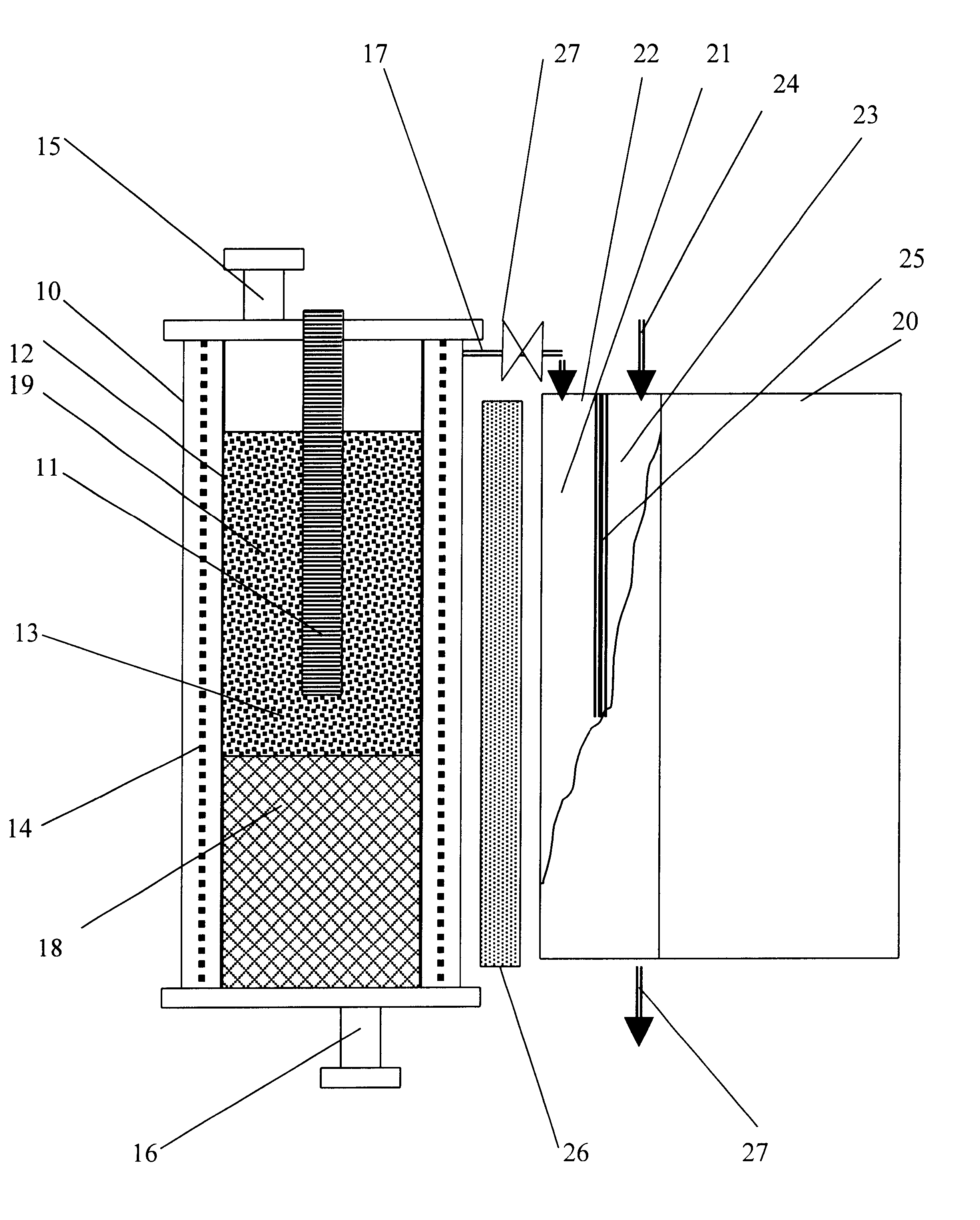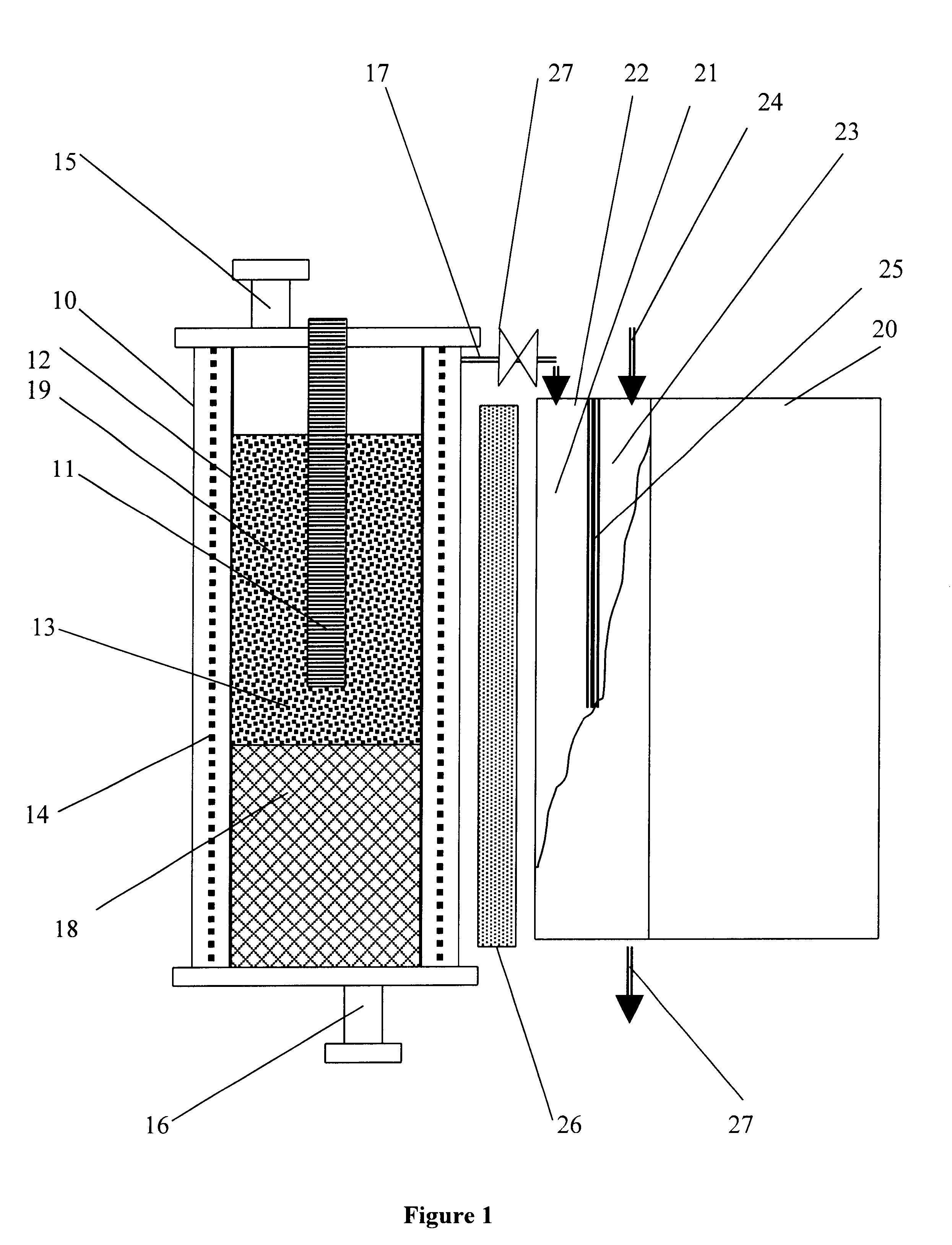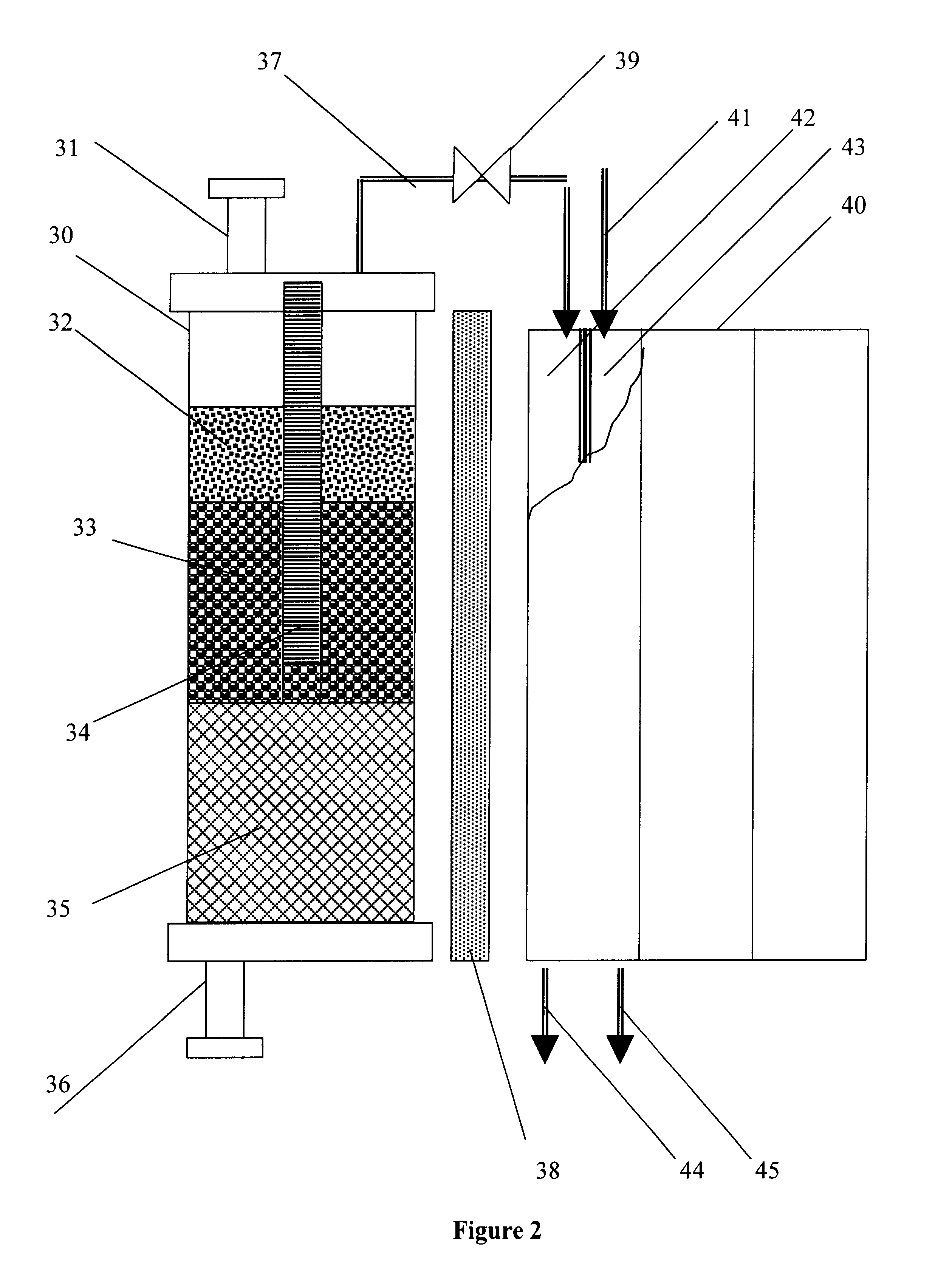Portable hydrogen generator-fuel cell apparatus
a hydrogen generator and portable technology, applied in the direction of electric generators, transportation and packaging, chemical/physical/physicochemical processes, etc., can solve the problems of low hydrogen storage capacity, cryogenically adsorption of hydrogen on activated carbons not being suitable for portable devices, and being compact and light-weight sources
- Summary
- Abstract
- Description
- Claims
- Application Information
AI Technical Summary
Benefits of technology
Problems solved by technology
Method used
Image
Examples
example 2
The experimental conditions of this experiment and the reactor were similar to the Example 1, except a ceramic fiber (volume 0.5 ml) was place at the bottom of the reactor and 0.41 g of diesel fuel was soaked into it. The reactor was maintained at 850.degree. C. 405 ml of gas with the average production rate of 10 ml / min was collected in the gas meter. The composition of the gaseous mixture was (vol. %): H.sub.2 -69.21, CH.sub.4 -30.21, C.sub.2 +-0.58.
examples 3-6
The following Table demonstrates other examples of the device operation using different CM and hydrocarbons at T=850.degree. C., P=1 atm, CM=0.5 g. Liquid hydrocarbons 0.2 g.
examples 7 and 8
demonstrate the feasibility of hydrocarbon decomposition over carbon-based ated by means of passing electric current through it.
PUM
| Property | Measurement | Unit |
|---|---|---|
| temperatures | aaaaa | aaaaa |
| temperature | aaaaa | aaaaa |
| temperature | aaaaa | aaaaa |
Abstract
Description
Claims
Application Information
 Login to View More
Login to View More - R&D
- Intellectual Property
- Life Sciences
- Materials
- Tech Scout
- Unparalleled Data Quality
- Higher Quality Content
- 60% Fewer Hallucinations
Browse by: Latest US Patents, China's latest patents, Technical Efficacy Thesaurus, Application Domain, Technology Topic, Popular Technical Reports.
© 2025 PatSnap. All rights reserved.Legal|Privacy policy|Modern Slavery Act Transparency Statement|Sitemap|About US| Contact US: help@patsnap.com



